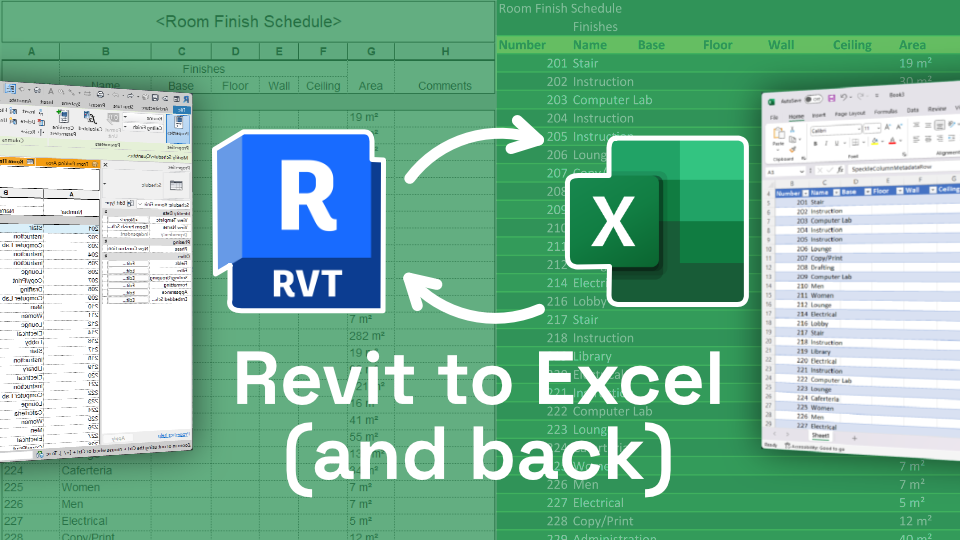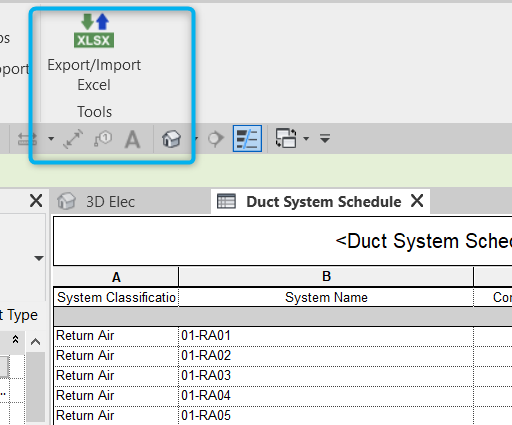Revit Add Ins: Broadening Your Design Capacities
Wiki Article
Breaking Barriers: Excel Importation Techniques for Advanced Revit Users
Check out numerous data importation approaches and master Excel integration to boost your Revit modeling capabilities. With our ideas and tricks, you can get rid of importation obstacles and end up being a real expert in using Excel for your Revit tasks.Advanced Revit Users: Leveraging Excel for Importation
You can easily take advantage of Excel for importation as an advanced Revit individual. Excel is an effective tool that can substantially enhance your process and performance in Revit. With its ability to manage huge amounts of information and execute complex computations, Excel can be a valuable asset in managing and arranging your task information.One method to leverage Excel for importation is by utilizing the "Web link Excel" feature in Revit. This function permits you to link an Excel spreadsheet straight into your Revit job, allowing you to update and synchronize data in between both programs. When dealing with routines or tracking adjustments in your task., this can be particularly helpful.
One more method to use Excel is by making use of the "Import/Export" attribute in Revit. This attribute permits you to import and export information in between Revit and Excel, offering you the flexibility to collaborate with data in both programs. You can import information from Excel right into Revit to develop aspects such as areas, doors, or walls, and you can additionally export information from Revit to Excel for further analysis or coverage.

Exploring Information Importation Methods in Revit Utilizing Excel
Exploring exactly how to import information from Excel into Revit provides effective methods for incorporating info. When you import data from Excel, you can perfectly move data such as room routines, product checklists, and devices data right into your Revit task. This procedure permits you to conserve effort and time by preventing manual data access.To import information from Excel into Revit, you can utilize the "Import/Export" attribute. This function enables you to map the Excel data areas to the matching Revit specifications, guaranteeing that the information is correctly appointed within the design. By selecting the ideal import choices, you can control just how the information is imported and how it interacts with your task.
One more method for importing information from Excel into Revit is by utilizing Dynamo. Dynamo is an aesthetic programming device that integrates with Revit and permits you to automate tasks and workflows. With Eager beaver, you can create personalized scripts that import data from Excel and manipulate it within your Revit job. This method supplies even a lot more flexibility and modification options.
Mastering Excel Assimilation for Advanced Revit Modeling
Mastering Excel assimilation for advanced Revit modeling includes making use of efficient techniques to flawlessly transfer information and automate jobs within your project. By taking advantage of the power of Excel, you can enhance your Revit modeling process and conserve important time. One crucial strategy is importing data from Excel spreadsheets straight right into your Revit model. This enables you to occupy parameters, such as room names or material amounts, easily. With a few basic actions, you can map the Excel columns to the corresponding Revit parameters and import the data precisely.An additional valuable method is exporting data from Revit to Excel. This enables you to extract information from your model, such as schedules or material quantities, and evaluate it in Excel utilizing formulas, charts, or other powerful tools. By leveraging the capabilities of Excel, you can perform complex estimations, develop personalized records, and gain useful understandings into your project.
In addition to information transfer, Excel assimilation can automate repeated tasks in Revit. By developing macros or manuscripts in Excel, you can automate procedures like producing sights, generating sheets, or applying typical family members - revit plugins. This not only saves time yet additionally makes sure consistency across your task
To understand Excel combination in Revit, it is important to understand the data framework and exactly how Revit communicates with Excel. By familiarizing on your own with the offered tools and strategies, you can unlock the complete possibility of Excel combination and take your Revit modeling to the next degree.
Overcoming Importation Challenges: Excel Techniques for Revit Specialists
When getting rid of importation difficulties, it is very important to be aware of effective Excel techniques that can profit experts in Revit. As an innovative Revit individual, you recognize the value of perfectly importing information from Excel into your tasks. You might encounter different challenges along the method. By utilizing effective Excel techniques, you can get rid of these obstacles and improve your performance.
Another beneficial strategy is using the "Transpose" function in Excel. This enables you to transform data from rows to columns or vice versa. When importing data right into Revit, this can be specifically useful when you have data in an upright layout in Excel, but you need it to be in a horizontal style in Revit.
In addition, making use of Excel formulas such as VLOOKUP and INDEX-MATCH can substantially help in mapping information from Excel to Revit. These solutions permit you to search for particular values in Excel and recover matching data from one more column. When importing huge datasets right into Revit., this can save you time and effort.
Excel Data Importation Idea for Advanced Revit Users
By acquainting yourself with efficient Excel pointers and methods, you can enhance your information importation procedure as a sophisticated user of Revit. Additionally, making use of Excel's "Paste Special" feature permits you to paste data from Excel into Revit while keeping formatting, such as cell color or font design. Another helpful technique is to utilize Excel's "Change and find" function to quickly make adjustments to your information prior to importing it into Revit.
Final Thought
You have currently learned useful techniques for importing data from Excel into Revit as an innovative user. Go ahead, break those obstacles and excel in your Revit jobs!
When importing information into Revit, this can be particularly handy when you have information in an upright style in Excel, but you need it to be in a straight style in Revit.
Additionally, using Excel formulas such as VLOOKUP and INDEX-MATCH can considerably help in mapping information from Excel to Revit. Furthermore, utilizing Excel's "Paste Special" attribute allows you to paste data from Excel into Revit while keeping format, such as cell color or font design.
Report this wiki page